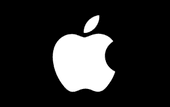 Apple Store
Apple Store
Up to $210 off with used Apple Watch trade-in
Ends
Out with the old and in with the new! Upgrade and save up to $210 off when you trade in your used Apple Watch. Some exceptions may apply.
We’re reader-supported and may be paid when you visit links to partner sites. We don’t compare all products in the market, but we’re working on it!
 Apple Store
Apple Store
Up to $210 off with used Apple Watch trade-in
Ends
Out with the old and in with the new! Upgrade and save up to $210 off when you trade in your used Apple Watch. Some exceptions may apply.
 Geekbuying
Geekbuying
Makibes A4 4G LTE smartwatch phone Android 7.1 for $97.99
Ends
Valid for a limited time only. T&Cs apply.
 Geekbuying
Geekbuying
RC Toys and Smart Watches on Sale Starting at $5.99
T&Cs apply
 Geekbuying
Geekbuying
Wearable Devices Brand Sale - 50% off and Faster Shipping
T&Cs apply
 Geekbuying
Geekbuying
Smart Watches
T&Cs apply
 Geekbuying
Geekbuying
Smartwatches Brand Sale
T&Cs apply
Wearable technology is more or less exactly what it sounds like: technology that you can wear on your body.
As technology improves, computers are getting smaller and smaller. Computing power that used to need a warehouse's worth of equipment to produce can now be contained in something the size of a watch.
The most popular examples of this technology are smartwatches and fitness tracking wristbands. However, wearables now come in many different forms including glasses, jewellery and clothing.
The wearable industry is evolving quickly with new innovations coming out regularly. From goggles that track your swim times to clothing that blows cool air on you when your body temperature exceeds a certain number, the possibilities are seemingly endless.
Some wearables are designed with a specific purpose, for example, to track your physical activity and health. These devices use sensors that keep tabs on a number of different metrics, such as the number of steps you take, your skin temperature and your heart rate, and use it to keep track of your individual fitness level over time.
Other wearables work as more general extensions of your smartphone, allowing you to send and receive texts, answer calls and engage Google Assistant, Siri or Alexa.
Most wearables use Bluetooth technology to connect to your smartphone, with dedicated apps offering an easy way to access key insights into your day's activities.
Wearables come in too many shapes and designs to list, but we'll explain some of the most popular and widely available types here:
When you're shopping for wearables, consider the following factors:
Wearables can be designed for a wide range of activities and purposes. If you want something to wear while swimming, you'll need a fitness tracker that's waterproof and can track your laps. If you want to be able to answer urgent texts without having to take out your phone, look for a smartwatch that's compatible with your phone.
Many wearables look like traditional watches or sport watches but they can come in lots of different shapes and designs. Think about how you'll wear it and whether or not you want it to stand out or blend in with your jewellery or clothing.
The longer the battery life, the better. Some wearables need to be charged daily, while others can go several days without needing a top-up. Unfortunately, longer battery life sometimes means a larger wearable or a higher price tag.
Not all wearables can do everything. Many can count steps, but they don't all offer GPS tracking or allow you to answer texts. Check what features are included and make sure it offers everything you need.
Each brand has its own app that you can use to change settings and get more use out of your wearable. For example, apps for fitness trackers usually allow you to track your workouts and set goals. Download the app to check how easy it is to use.
Different brands use different operating systems. The important thing to check is whether or not the system is compatible with your smartphone. For example, Apple's smartwatches only work with Apple devices.
Wearables collect all types of data. This data enables the wearable to keep track of your activity and give you personalised analysis. For example, a fitness tracker can monitor your sleep for weeks and use the information to give you tips on how to get more quality sleep.
Collecting data is essential to the functionality of most wearables, but what happens to the data once it's stored and who has access to it?
When you buy a wearable, you'll usually need to sign up to an app or service. Part of this process involves checking a box (or signing something) that says you've read the user agreement. Most of us check these boxes regularly without ever reading through the lengthy agreement, but reading these documents is the only way to find out what data is being collected and how it's being used.
User agreements include how long a company can store your data, what the company can do with the data and whether or not you can opt out of certain data being collected. The agreement should also mention how the data is collected. For example, the company may collect data from your phone in addition to the necessary tracking data from your wearable.
These agreements and policies vary from company to company and change over time as technology and legislation evolve. The best way to keep yourself protected is to stay informed.
The Withings ScanWatch does a superb job of fitness tracking, right down to ECG functionality, but despite its looks it's much more a fitness band than a proper smartwatch.
The realme Watch S isn’t the best fitness tracking watch, but it stands out for its affordable price point and exceptional battery life.
Here are the top Fitbit devices you can get your hands on here in Australia.
The Suunto 7 wants to be a fully featured GPS sports watch and smartwatch in one, but has it bitten off more than it can chew?
These are the six best men's watches you can buy right now in Australia.
The HUAWEI WATCH FIT straddles the line between a fitness tracker and a true smartwatch with good battery life.
Despite its obvious copying of Apple's Watch design, Oppo's Watch delivers the goods if you're keen on an Android Wear watch to cover the smartphone basics in a stylish way.
Apple's slow refinement of the Apple Watch continues, and while it's still a great smartwatch, we'd really like to see something new from Apple.
We've found the top 6 fitness trackers you can buy in Australia right now, based on expert hands-on testing and real customer reviews.
Samsung brings back its iconic rotating bezel to the smartwatch world, and with it regains the crown of best smartwatch for Android users.